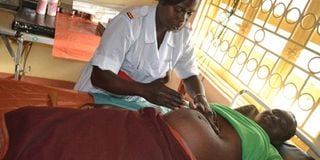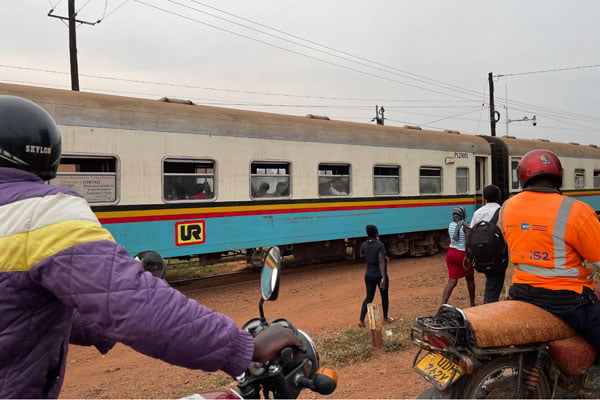25 districts register drop in maternal deaths – ministry

A midwife attends to a pregnant woman. At least 25 districts in Uganda register drop in maternal deaths
What you need to know:
- The Uganda Reproductive Health Voucher Project is a ministry of Health programme being implemented in partnership with Marie Stopes Uganda (MSU) as the Voucher Management Agency (VMA) with support from the World Bank and United Nations Population Fund (UNFPA).
- The primary beneficiaries are the poor and vulnerable pregnant mothers residing within the catchment areas of the contracted health facilities.
Kampala. Many more families across the country have reason to smile as an average of 12 maternal deaths per month have since dropped to an average of only three deaths across 25 districts.
According to Dr Blandinah Nakiganda, the assistant commissioner for Health Services, the reduction has been registered in districts where free antenatal and postnatal healthcare was introduced by the Health ministry in both government and private health facilities since September 2015.
So far, she said, a total of 32,500 deliveries have been conducted under the Uganda Reproductive Health Voucher Project, which targets a total of 142,300 deliveries by the end of the four-year project in 2019.
“Services, including all the four Antenatal Care Services, elimination of mother-to-child transmission of HIV services, HIV/Aids testing and counselling, safe skilled delivery and postnatal care are covered by the voucher,” Dr Nakiganda said.
She was speaking at the official launch of the project during a stakeholders meeting at the Lake Victoria Serena Resort and Spa Hotel in Kigo, Wakiso District, on Tuesday.
The project, which is implemented by Marie Stopes Uganda, a reproductive Health non-governmental organisation, aims to reduce the number of pregnant women and babies dying due to pregnancy-related conditions.
Mr William Nyombi, the programme manager at by Marie Stopes Uganda, said the programme has managed to succeed because it reimburses contracted health facilities after the services are offered rather than prior.
“Each of the 247 contracted health facilities is reimbursed monthly depending on the services delivered although the standardised cost estimated for a normal and caesarean section deliveries is estimated at $70 and $120.”Mr Nyombi said.
How the voucher works
The $13m (about Shs46.8b) Uganda Reproductive Health Voucher Project funded by the World Bank assists pregnant women living in poor rural and disadvantaged areas to access skilled care.
The mothers, who are identified by the Village Health Teams (VHTS), are able to access the services from any of the contracted Health centres III and IV as well as both private and public hospitals after buying a Shs4,000 voucher.
However, despite the success, officials from the Health ministry cited the selling of the vouchers above the recommended price and claiming money for services that have not been offered by health centre correspondents.
“Sometimes they (service providers) claim in error, but in most cases it is intentional. But we have no material loses,” Dr Nakiganda told Daily Monitor in an interview. Maternal Mortality Ratio (MMR) in Uganda stands at 343 per 100,000 live births, according to the Ministry of Health.
The districts
These districts have been selected because of their poor indicators in maternal health as compared to the National Average with the exception of Mbarara, Jinja and Iganga which have referral facilities. Implementing districts include Mbarara, Kabale, Kanungu, Ntungamo, Kiruhura, Sheema, Kiruhura, Buhweju, Mitooma, Ibanda, Bushenyi, Rubirirzi, Jinja, Bugiri, Kamuli, Buyende, Kaliro, Luuka, Mayuge, Iganga,Namutumba,Kibuku, Tororo, Namayingo and Busia.
The project
About the programme. The Uganda Reproductive Health Voucher Project is a ministry of Health programme being implemented in partnership with Marie Stopes Uganda (MSU) as the Voucher Management Agency (VMA) with support from the World Bank and United Nations Population Fund (UNFPA).
Project goal. To reduce the number of pregnant women dying due to pregnancy related conditions and also reduce the number of new born babies dying.
Beneficiaries. The primary beneficiaries are the poor and vulnerable pregnant mothers residing within the catchment areas of the contracted health facilities. The mothers are expected to be able to reach the facilities in less than two hours. The contracted service providers and surrounding communities are the secondary beneficiaries.




